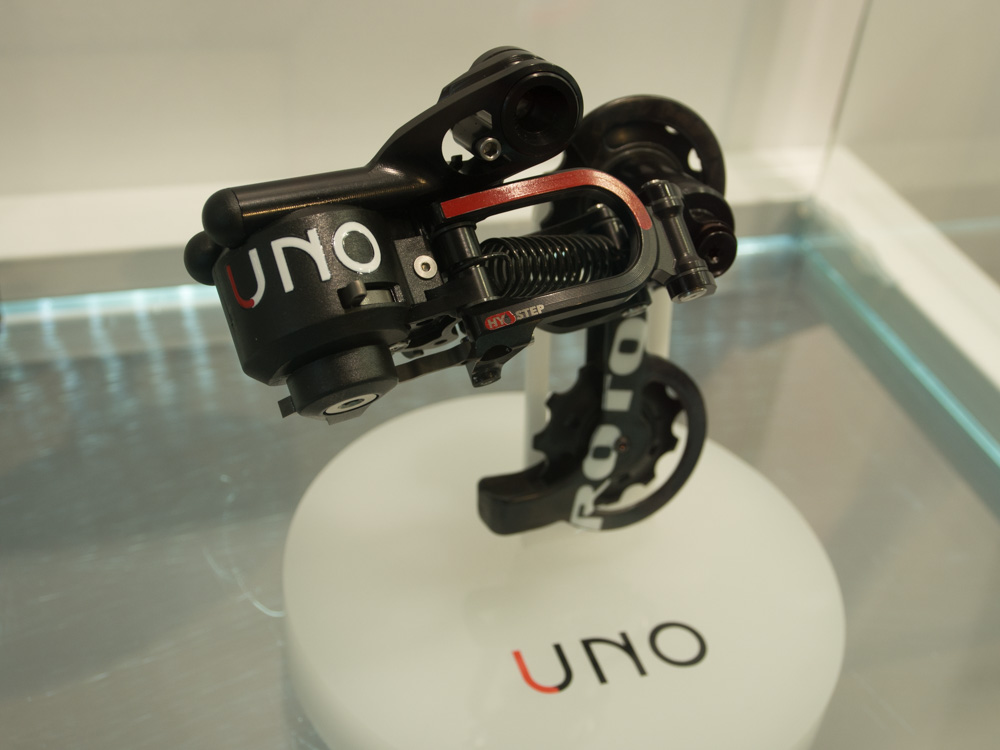Rotor, noted manufacturer of those funky but effective wobbly chainrings, has branched out in a big way and introduced a complete component group, called Uno. The highlight of the group is a hydraulic shifting system. That’s right — fluid-powered shifters to go along with your brakes.
Aside from the intriguing engineering aspects, I wondered — why hydraulic shifting? It turns out that use of hydraulics was the final step in a design process that started from the problem of race team equipment. The Rotor-sponsored Team MTN Qhubeka was being pressured by the big players to use the chainrings that come with their groups, rather than Rotor’s. So, thought company co-founder and “Chief Innovation Officer” Pablo Carrasco, why not develop an entire group to complete the team’s bikes?
Strong patents for current derailleurs and shifters are one big reason not to attempt this. But Carrasco and company found an innovative way around them: put the index mechanism in the derailleur rather than the shifter. Once that part was done, they realized that there was no reason not to go hydraulic, same as with brakes, and in fact they could gain some significant advantages by ditching cables altogether. (The usual distance between indexing mechanism and derailleur partly explains why previous non-cable systems, such as Shimano’s Airlines and Acros’s A-GE, did not fare so well: this distance introduced too much variability given factors such as temperature acting on the fluid or air; with the indexing happening right at the derailleur, shifts will always be precise no matter what goes on with the hydraulic fluid.)
What are the advantages? No need for changing corroded cables or adjusting tension. Also, with a branched hydraulic system, the shifting can be actuated from multiple points on the bike, for instance from the ends of aero bars and from the drops. Different combinations of brake and shift lever placement are also possible.
It’s a brilliant idea. But how does it work? Rotor had two shift set-ups in their booth for test clicking. One paddle controls both up and down with a shorter and a longer throw. The shift lever feel was firm, but not overly so, reminding me of the manual shift in a high-performance car. Chipps said it felt, to him, like a combination of Shimano, SRAM, and Campy — precise, positive, and solid. The hoods seemed like they’d be comfortable over the long haul. Apparently the Rotor crew has been testing the system for a couple of years in all kinds of conditions — including cold and mud — with positive results. They report that the shift lever throw increases slightly in the cold, but that’s it.
Let’s take a closer look at this system.








Rotor is aiming for the Uno system to be available in March of next year.





